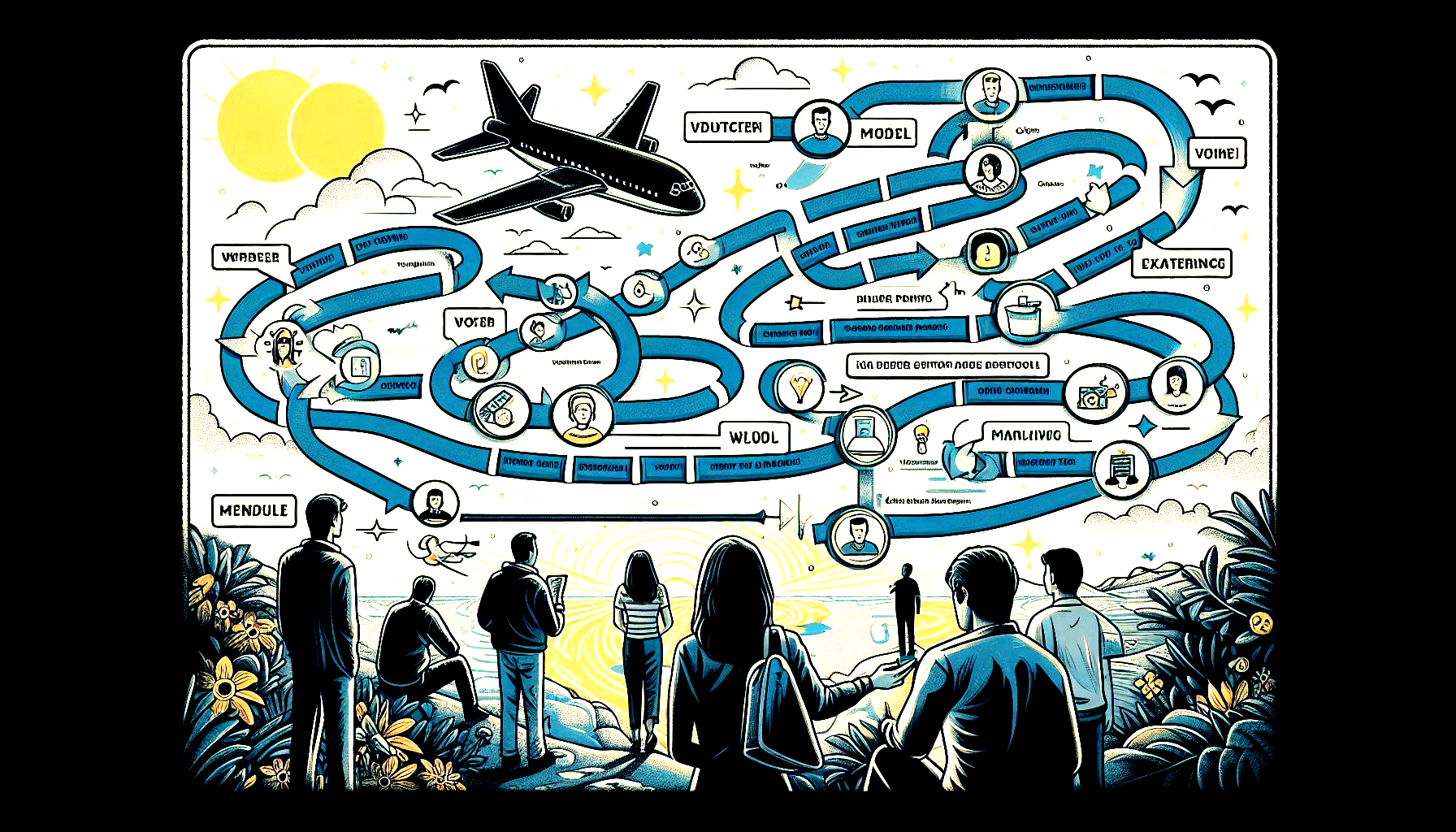Journey Mapping in Service Design: A Startup Founder's Guide

As a startup founder, understanding your customers' experiences is crucial for building products and services that truly resonate. One powerful tool in your arsenal is journey mapping — a cornerstone of service design that can revolutionize how you approach user experience.
What is Journey Mapping?
Journey mapping is a visual representation of the process a person goes through to accomplish a goal. In the context of your startup, this could be anything from signing up for your SaaS platform to completing a purchase on your e-commerce site.
Why Journey Mapping Matters for Startups
- Identify Pain Points: By mapping out each step of the user's journey, you can pinpoint where frustrations or roadblocks occur.
- Empathy Building: It forces you and your team to step into your users' shoes, fostering a deeper understanding of their needs and motivations.
- Opportunity Spotting: Journey maps often reveal unexpected opportunities for innovation or improvement.
- Alignment: They create a shared understanding across your team about the user experience, ensuring everyone is working towards the same goals.
How to Create a Journey Map
-
Senarios & Expectations: Decide which specific user journey you're mapping. For example, "New user onboarding" or "Customer support process".
-
Identify Your Actors: Who is going through this journey? Create a clear picture of this user, including their goals, pain points, and motivations.
-
List Touchpoints: Identify all the points where your user interacts with your product or service.
-
Map the Journey: For each touchpoint, document:
- Actions: What is the user doing?
- Thoughts: What might they be thinking?
- Feelings: How might they be feeling?
- Opportunities: Where can you improve their experience?
-
Validate: Test your assumptions by talking to real users or analyzing data.
-
Iterate: Use the insights from your journey map to make improvements, then update the map accordingly.
Tips for Effective Journey Mapping
- Collaborate: Involve team members from different areas of expertise for diverse perspectives.
- Use Real Data: Whenever possible, base your journey map on actual user research rather than assumptions.
- Keep It Visual: Use icons, colors, and other visual elements to make your map engaging and easy to understand.
- Think Beyond Digital: Remember to include offline touchpoints if they're part of the user's journey.
Leveraging Journey Maps for Your Startup
Once you've created your journey map, use it to:
- Prioritize Development: Focus your limited resources on addressing the most critical pain points.
- Inform Design Decisions: Use insights from the map to guide your UX and UI design choices.
- Improve Customer Service: Train your support team based on the emotional journey of your users.
- Guide Marketing: Craft messaging that addresses user needs at each stage of their journey.
Remember, journey mapping isn't a one-time exercise. As your startup evolves and you gather more user data, revisit and refine your maps regularly.
By incorporating journey mapping into your service design process, you're not just building a product — you're crafting experiences that will set your startup apart in a crowded market. It's about seeing the forest for the trees, ensuring that every interaction contributes to a cohesive, delightful user experience.
So, grab that whiteboard or fire up your favorite digital tool. It's time to map out the journeys that will lead your users — and your startup — to success.